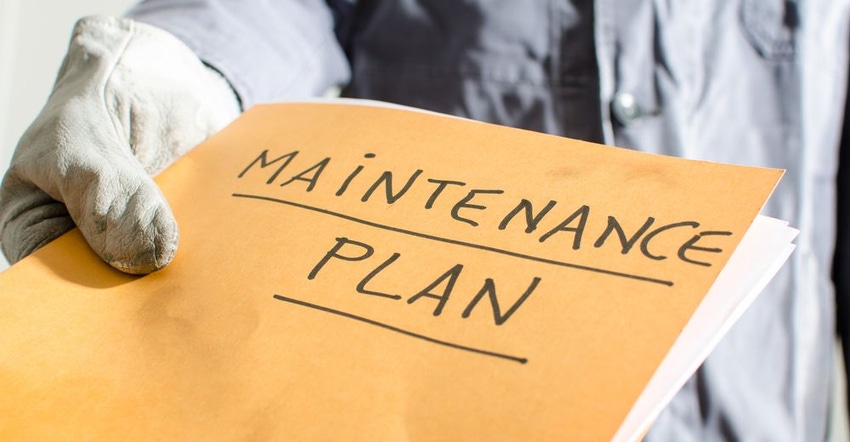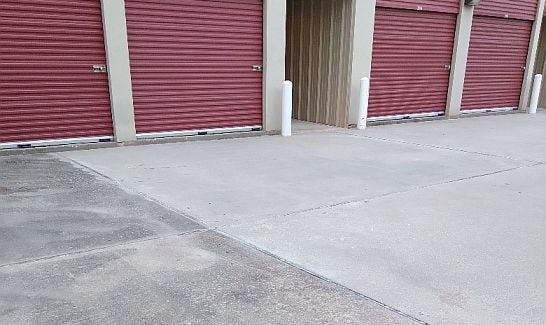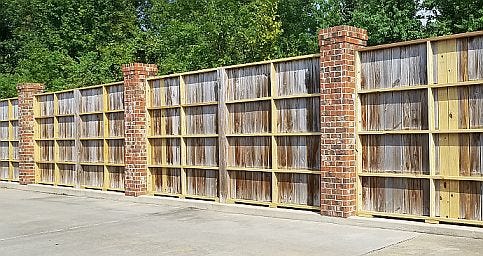Among the many duties of a self-storage operator is keeping the site looking great, from the curb to the unit doors and everything between. But the fact is, maintenance can be overwhelming, time-consuming and even costly. A facility manager shares her secrets for juggling it all and staying on track.
October 18, 2022

Have you ever gone into the restroom of a retail store or restaurant and noticed the cleaning checklist on the door? Was it up to date? Did the area look like it was recently cleaned? The purpose of this list is to keep staff on task and let others know what duties have (or haven’t) been completed and on what schedule.
We all know which maintenance items should be addressed at a self-storage facility, but responsibilities can sometimes slip through the cracks, especially when we’re busy. So, it helps to create useful checklists and timelines and keep detailed records. Could you remember the last time you cleaned the air-conditioning units or repainted the bollards if you didn’t? A solid to-do list and schedule also lets other members of your team know what duties need to be performed and when. Creating and following them will keep everything—and everyone—on track.
Build a List
One of the first steps in setting your self-storage maintenance strategy is creating a master task list. Write down all of your duties, no matter how simple or basic they are. Include everything, even things like wiping your counter, emptying the trash and sweeping the floor. It might seem stilly to add normal chores you do every day, but if you’re training a new person or have someone filling in, how else are they going to keep up with your regular routine?
This can be a pretty long list, so it’s helpful to organize tasks into categories by type, frequency, who’s responsible, etc. If your self-storage facility employs a dedicated maintenance person, make sure they’re involved, as they’ll have valuable insight.

The difference power-washing can make on concrete, shown here
at Tower Self Storage in Monroe, Louisiana
Self-storage upkeep involves a lot of routine cleaning. For the purposes of this article, I’m more focused on the less frequent but critical tasks that can get lost in the shuffle. These include activities that ensure the facility remains in proper working order, such as servicing the HVAC units, inspecting the door latches, checking the irrigation system, etc. Here are some other chores that can easily be forgotten:
Inspecting and repairing the roof
Cleaning out the gutters
Pressure washing or repairing driveways, concrete and sidewalks
Adjusting the lawn sprinklers for a change in season
Replacing or improving signage and lights
Painting bollards or replacing their covers
Removing weeds in concrete cracks
Trimming brushes along the fencing or perimeter
Refilling bait boxes for pest control
Checking batteries on thermostats
Repairing carts, furniture movers and dollies
Replacing fence boards or fixing chain-link
To understand what your self-storage property needs, walk your site and look at it through the eyes of a tenant, supervisor or a prospective owner. Write down anything that gets serviced, maintained or updated, whether big or small. Make notes on which areas to check regularly. Just because the back fence is fine now doesn’t mean it won’t need attention in three months. Finally, identify any jobs that could be done by outside contractors. It’s still your responsibility to ensure they’re completed, but it sometimes makes sense to hire help.
Set a Timeline
Once you’ve listed all the self-storage maintenance tasks you can think of, put them into a timeline. Duties may need to be done daily, weekly, monthly, quarterly or annually. Some may go longer or take place on a seasonal schedule. I’m sure many of you have a spring-cleaning period that would fit into this list! When scheduling your tasks, consider:
How much traffic does your facility get on a daily basis? This affects wear and tear on many items such as door stops, gates, carts, etc.
What types of self-storage units do you have? At drive-up properties, you’re going to be more concerned about the condition of the roll-up doors and door latches than you would at an indoor, climate-controlled facility.
In what type of area are you located? If you’re near a lot of trees, you may have issues with leaf buildup on roofs and gutters. On the other hand, if you’re near a lot of other businesses, you many need to worry about fencing or concrete damage.
What’s the weather like in your region? If you’re in the south, you probably won’t need to worry about salting your concrete, but those in the north will. Properties in coastal areas have different concerns than those in “Tornado Alley.” Every facility has unique maintenance needs.
Save a copy of your maintenance to-do list and timeline in your hard files, training manual and on a computer. These documents are important, and you’ve spent a lot of time putting them together. Plus, you never know when someone might need this information for training purposes or budgeting.
Also, set up calendar reminders on your computer or an app. This is especially important for tasks that are done just a few times per year. Just as you’d set any appointment on your computer or phone, set one to clean the gutters every three months!
Buy Supplies
Once you have your self-storage maintenance list and timeline, make notes on supplies or equipment you’ll need to accomplish these tasks. If the job requires you to hire a vendor, ask for an estimated date of work or a courtesy reminder call. This is helpful if you need to order something in advance. For example, you might need AC filters to be on site prior to servicing or a dumpster delivered before a big clean-up. With supply shortages and shipping delays, don’t assume you’ll get a quick delivery.
Work Around Customers
When scheduling your maintenance tasks, consider if they’re going to interfere with your self-storage tenant traffic. Where and when is the work going to be performed? How long will it take? What will be needed to complete it quickly and safely?
Of course, we want as little disruption to our customers as possible, but sometimes it’s unavoidable. By knowing when tenants are less likely to be on site, you can plan accordingly.


The fence at Tower Self Storage, before and after painting
Also, estimate how long the task will take, and have all supplies and equipment readily available before starting. Most important is safety for employees and tenants, so use cones, signs, tape, etc., whenever needed. For big jobs, I recommend posting signs in the office and at entry keypads to let tenants know you’ll be doing some work on specific dates. Add a “Sorry for any inconvenience” note as well. A little courtesy and acknowledgement go a long way, especially if they see some property improvements!
Look for Savings
All your planning and prepping can pay off in the form of cost savings. When you have a self-storage maintenance strategy, you have time to price supplies before you need them and avoid problems with supply shortages and shipping delays. You can also determine if the job is something you can handle in-house, in part or whole, rather than hiring out. Here are a few other money-savings tips:
Buy air filters from a supplier instead of through your AC vendor.
Do your own AC cleaning. Even if you call in a professional to do the servicing, basic cleaning is something you can do yourself once taught.
Perform your own pest control. There are several suppliers that sell commercial-grade products. Check your state guidelines first!
Buy regularly used items in bulk. Trash bags, mop heads, cleaning supplies, etc., can often be purchased at a better deal and with less chance of supply shortages.
Look for free shipping or delivery when ordering.
Wash and reuse dust-mop heads.
Make your own vinyl signs. Lettering on doors and windows and even unit numbers are vinyl cutouts that can be made in the office if you have a cutter.
Keep extra parts and supplies on hand for minor repairs. This might include keypads, gate wheels, etc. This can save you from paying for an extra service call if you need to order something that won’t come in until later.
Self-storage property maintenance can get expensive, especially when unexpected problems arise. With today’s labor shortages, getting something fixed quickly isn’t guaranteed. Regular upkeep along and preventive measures are vital. By taking time to create to-do list, timeline and overall strategy, you’ll be on track to having a great-looking facility.
Anna Ross is facility manager for Tower Self Storage in Monroe, Louisiana. She began her self-storage management career about 10 years ago in Jacksonville, Florida. She’s managed facilities as small as 258 units and large, multi-story locations with 1,260 units. She recently experienced her first property expansion and is always looking to learn new things. For more information, call 318.388.1111, email [email protected].
About the Author(s)
You May Also Like





